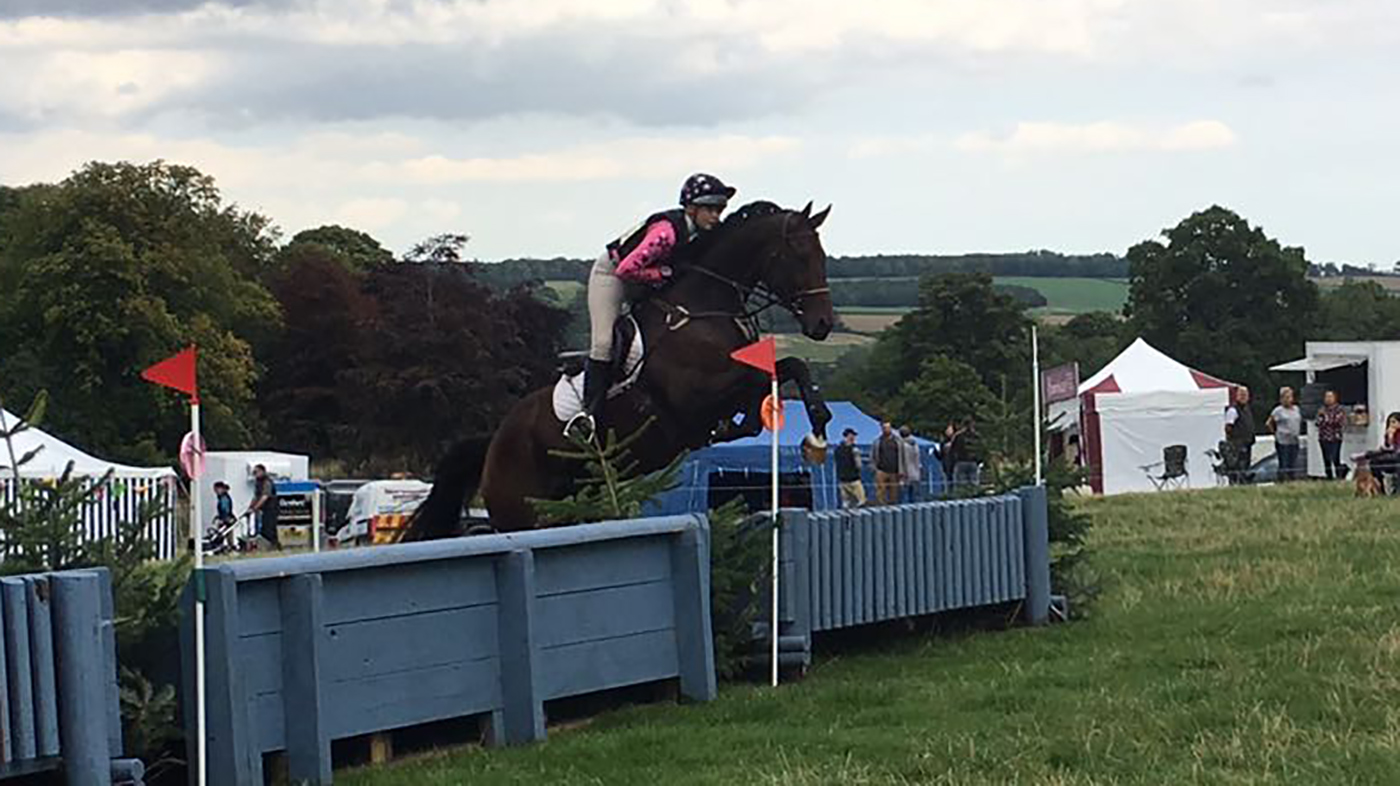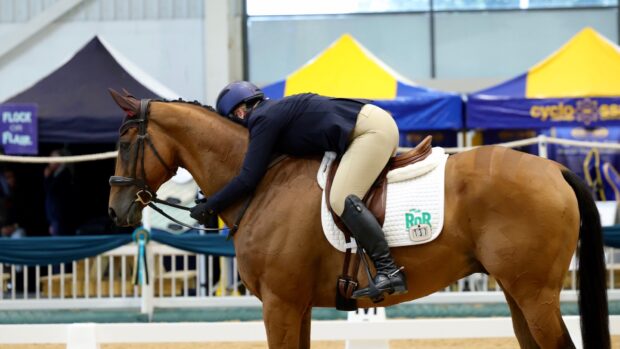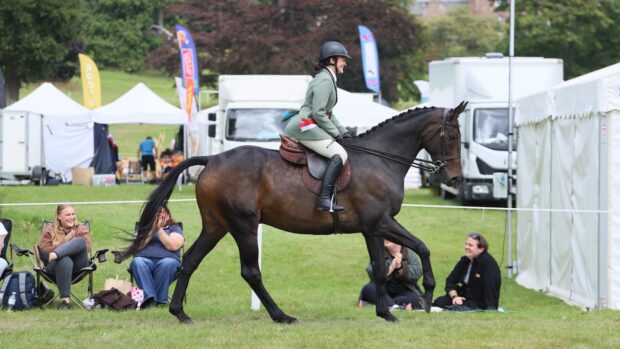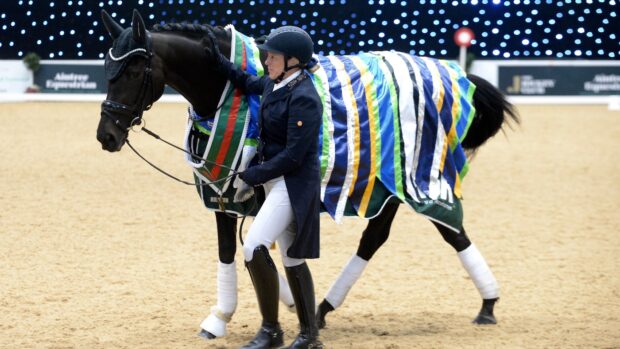Have you ever considered retraining a racehorse? Not sure what’s involved? Well read on…
As the Retraining of Racehorses (RoR) celebrates its 20th year and the racing industry gets going again following the Covid-19 pandemic that forced it to grind to a halt, we bring you a new series that offers professional insight into the realms of owning and retraining racehorses.
This week we meet three remarkable ex-racehorses who exceeded the expectations of their owners and trainers, thanks to Rowena Wade Auld, who has several years of experience in retraining racehorses. She developed a project and training system based on the foundations of work-riding racehorses, fused with her eventing training and experience.
She approached local trainers who supported the project and over the next few years, her team re-schooled, competed and produced for sale over 20 ex-racehorses with great success, the highlights of which are explained below…
RonRon

“In 2015 I bought a stunning dark brown gelding by Presenting from a local trainer and decided to experiment. How long would it take to get a fit racehorse from the track to a British Eventing (BE) horse trial? We had a sticky start. Talented but with a default mode of no, RonRon refused to go near any cross-country obstacles that didn’t look like a race fence, and during an early dressage test, my amused trainer enquired if I had received extra marks for elevation of the forehand at X! He reared when he did not like something, and it was challenging to get him to take any contact. But with patience and consistency, six weeks later, we were at our first BE — it was a steep learning curve but not long enough for a polished performance. Two weeks later, we were eighth at Dalkeith Horse Trials, and many of his unwanted behaviours were receding. In the following months, we were first over the finish line at a charity point-to-point, frequently placed at in British Dressage (BD) and British Showjumping (BS) with double clears at 1– 1.15m level. He excelled at arena eventing, charity rides and later became a fantastic hunter, even herding sheep on a hill farm! Then at a RoR training session, I was advised that we had significant RoR jumping series potential. They were right. We went on to win qualifying classes for the Royal Windsor Horse Show and Floors Castle Eventing Challenge. In his second year, he gained condition and won the Jockey Club’s Novice and Tattersalls Scottish Show Series, qualifying for the prestigious Royal Highland Show. Now on loan as a schoolmaster, he enjoys hacking, dressage training and showing a younger rider the competition ropes.”
Abbey

“Abbey, a bright bay gelding, came home with me from Perth races after being pulled up. Previous winner of the Leopardstown Hurdle, the current trainer felt he was a good horse, but at 12 and after a hard career, he had lost heart. I rode him at Perth racecourse and thought I could work with him. We assessed he had dermatitis, sharp teeth, old abscesses, sore hocks, and a nasty inflammation on his back. We successfully treated his minor ailments and began a work regime that combined stretching and fitness work on fields and hills, followed by schooling and showjumping training to develop his technique, suppleness and core strength. He attended BS coaching sessions, dressage training and was placed in showing classes. He responded exceptionally well to new training methods and became a strong, happy lad with a gleaming coat who loved his work. Refreshed and comfortable, he sold quickly to a family point-to-point yard where he went on to win many races.”
Continued below…
Liked this? You may also enjoy reading these articles…
Retraining an ex-racehorse can be extremely rewarding but there are some important points to consider first
Louise Robson specialises in retraining ex-racers for dressage and rides three horses owned by The Queen

Want to take on an ex-racehorse? Consider these pros and cons first

‘I couldn’t say no to The Queen!’: dressage rider retrains RoR Horse of the Year for Her Majesty

Subscribe to Horse & Hound magazine today – and enjoy unlimited website access all year round
Peachey

“This successful 11-year-old bay gelding had returned to his owner following a repeated check ligament injury. After six months of box rest, she was unsure of the best way forward but felt she owed it to him to do what was best. Initially, this fabulous horse was defensive in the stable, displaying threatening behaviour that made him impossible to groom. Although a yard favorite in training, he was so sharp that he had always been exercised alone by the head man. His movement was short in front under saddle but not in-hand, leading me to have his back X-rayed alongside standard leg scans. Spinal fusion (kissing spine) was confirmed and we began the tricky task of rehabilitating him. After medical treatment and three weeks of walking on the roads, we were able to begin light schooling. Following several weeks of dressage and showjumping training he was fourth at his debut RoR outing, the Floors Castle eventing challenge and the judges were full of praise. His owner was delighted with the comments and could not believe how relaxed he was to handle and warm up. At this moment, she decided he was not going back to racing. Peachey progressed to compete at Aske International on his debut BE event with my head girl Fran Daking, when only three days before, an injury prevented me from competing.”
We continue to publish Horse & Hound magazine weekly during the coronavirus pandemic, as well as keeping horseandhound.co.uk up to date with all the breaking news, features and more. Click here for info about magazine subscriptions (six issues for £6) and access to our premium H&H Plus content online.



